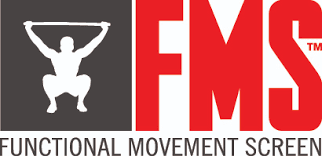The hamstring consists of three muscles that run through the back of the thigh. The muscle group starts at the hip and ends just below the knee. A functioning hamstring allows us to perform many everyday actions.
When the hamstring is pulled or strained, the discomfort can be significant and make everything from walking to sitting difficult.
This post goes over:
- What a hamstring strain is
- Common ways to get a pulled hamstring
- Naturally treating a hamstring strain
- Chiropractic solutions to treat a hamstring strain
- And more
If your hamstring has been injured and is hindering your routine, read on to learn how to support your body safely.
What is a Pulled Hamstring?
A healthy hamstring is important to our movements; even sedentary people rely on their hamstrings to move.
When the hamstring is stretched too far or suddenly put under high pressure, it can become strained due to muscle overload. This strain can affect numerous parts of the leg’s mechanics.
The hamstring muscles help with numerous actions, such as:
- Hip extension for jumping, running, climbing stairs, transitioning from sitting to standing, and more
- Knee flexion for kneeling, squatting, sitting, and lunging
- Gait cycle, the repetitive action of walking
- Decelerating knee extension and hip flexion to slow down your movement
- Stabilizing the knee joint to keep it aligned and protected from musculoskeletal imbalances and injuries
- Rotating the leg for balance, stride length, and weight transfer
- Hip joint stabilization for helping control the hips through movement and when moving other parts of the body
- Pelvis tilting for extending and rotating your spine
Common reasons for a hamstring strain include:
- Improper warm-ups before physical activity
- A sudden, violent, or forceful movement
- Regular actions such as sprinting, jumping, lunging, and climbing that lead to muscle overuse
- A direct blow to the hamstring, such as when kicked
- A traumatic accident, such as a car accident or sports accident
- Wear and tear or aging
- Poor flexibility and tight quadriceps
- Muscle fatigue
- Adhering to incorrect movement and lifting techniques
- A chronic condition, such as arthritis
Because we rely on our hamstrings so much, they’re at risk for injury, and anyone at any age and living any lifestyle may experience a pulled hamstring.
5 Ways to Naturally Treat Your Pulled Hamstring At Home
When in pain, you want relief as quickly as possible. For many, that means heading to the pill bottle. While that can subside pain for a while, it won’t help remedy the injury.
These five tips for natural hamstring pull relief are chiropractor-approved and contribute to the healing process:
- Rest the hamstring and avoid activities that cause more pain or put undue pressure on the muscle group
- Ice the hamstring for 15 to 20 minutes a few times a day to discourage inflammation
- Compress the hamstring with a wrap to reduce swelling and encourage circulation
- Elevate the hamstring above the heart to reduce inflammation
- Stretch the hamstring gently to promote healthy movement and tissue stability
Chiropractic in Burlington for Hamstring Strain Relief
The above tips can significantly alleviate symptoms of a hamstring strain. For the best results, though, collaborating with our Burlington chiropractor will provide peace of mind as you receive the most effective healing strategy tailored to your needs.
We understand what it takes to remedy your hamstring strain efficiently. We’ll learn about you, your habits, and your hobbies and ensure you get the best possible chiropractic care and guidance to protect your body in the future.
Some of the chiropractic services we use to treat pulled hamstrings include:
When you’re ready to reclaim your quality of life confidently, we’re here to help you reach your wellness goals with a unique healing strategy that gets lasting results. We know you need to trust that your body will support you. Let us help.
Book with us today, and let’s get started.


